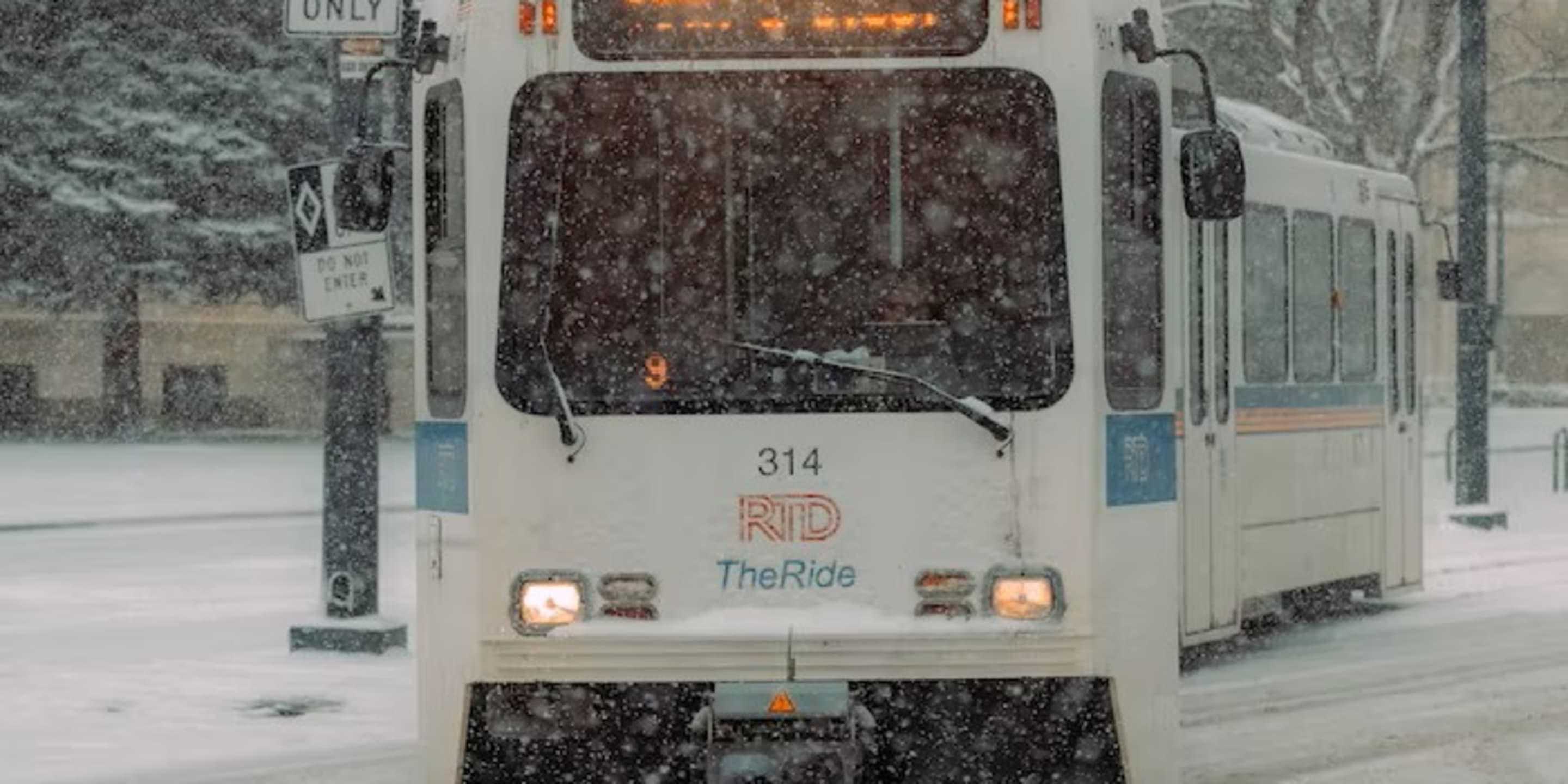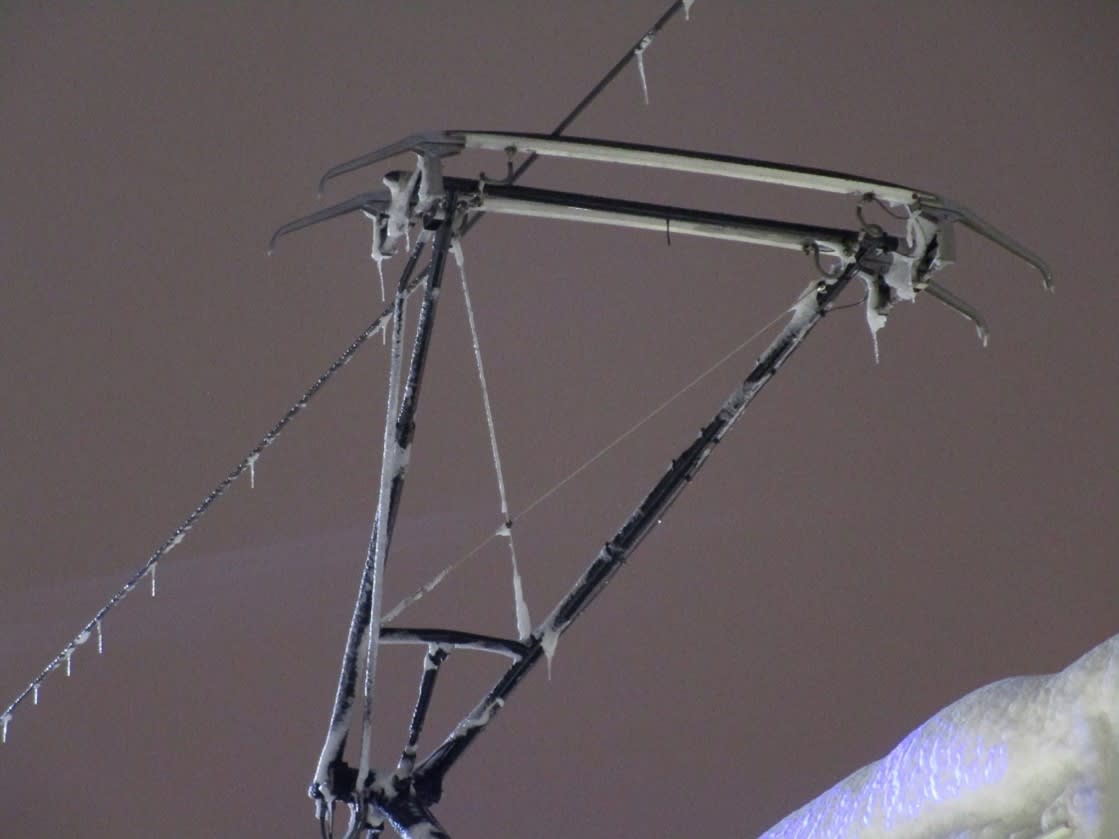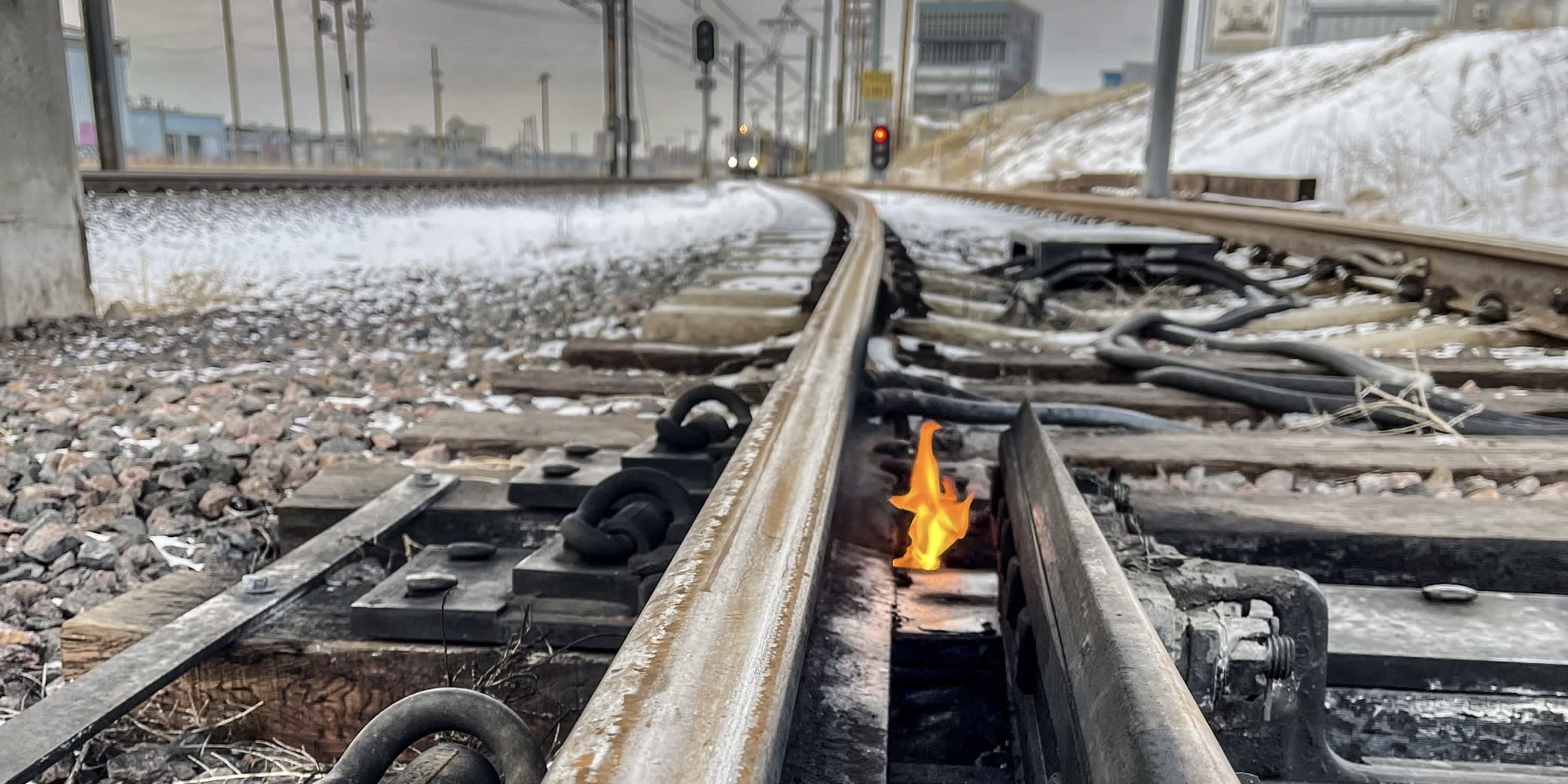
RTD rail cars built for winter weather
When cold snaps strike, everyone feels the effects of snow and lower temperatures. Through behind-the-scenes measures and by design, RTD keeps light rail and commuter rail services running despite winter’s offerings of snow and freezing temperatures.
RTD trains are built to manage icy, blustery conditions when winter weather visits Colorado. For instance, older SD100 LRV model light rail trains are outfitted with a heater for every first step to prevent snow and ice build-up. This makes boarding light rail trains easier and safer for customers during inclement weather. Newer light rail trains, however, are weather protected inside the vehicle.
So that operators can navigate safely, rail mirrors are heated and so is the train’s coupler – the part that connects train cars together – to prevent ice and snow buildup. This allows the cars to keep moving during cold temperatures and snow.
Newer light rails trains have kicked up winter defenses with the SD160 LRV model having a heated windshield and cab side windows, also.
On top of light rail cars, one might notice pantograph strips connect the train to the overhead power wire. These pantographs are heated prevent ice buildup and keep the train’s electrical connection and power constant even in times with heavy, wet snow.

Heated pantograph strips connecting rail cars to power are free from snow buildup while heavy snow accumulates on top of the train’s rail car.
During high wind and blizzard conditions, rail operators activate the doors to empower customers to press a green-lit button to enter and exit the train which helps to conserve heat inside the rail car.
Now on to the switches, which allow for the agility of trains being able to navigate their various lines smoothly.
To keep one of the yard’s track switches working properly, an older technology that is tried and true is lighting “smudge pots” in the RTD railyard. Four relatively small pots of kerosene oil are lit on every switch to ensure they are warm enough to keep functioning, as shown in this video.
Electronic heaters keep RTD main line track switches functioning and are set to turn on when temperatures drop to freezing level.
During heavy snow and ice conditions, RTD runs “sweep trains” overnight to keep the tracks and wires free of ice and snow for rail services to start the next morning.
RTD stages maintenance employees throughout the city to quickly respond to track and rail car challenges in severe snow, icy or high wind weather that would otherwise disrupt service.
Even with the best winter planning and preparation, the light rail may need to run at slower speeds around train stations and through crossings to help keep everyone safe. RTD crews are working around the clock in winter weather to meet the goal of ultimately delivering customers safely to their destinations.
